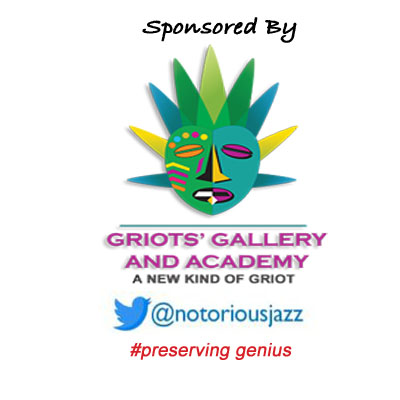
Daily Dose Of Jazz…
Clyde Lanham Hurley, Jr. was born on September 3, 1916 in Fort Worth, Texas. Self-taught, he learned to play the trumpet by playing along with Louis Armstrong records. He studied music at the Texas Christian University in Fort Worth from 1932 to 1936 where he participated in the school’s jazz band. He began his career working with territory bands.
In 1937, while drummer/band-leader Ben Pollack was touring through Texas he heard Hurley and invited him to join his orchestra where he soloed on So Unexpectedly. While on a touring stop with the band in Los Angeles, California he left to become a studio musician. He played with Paul Whiteman then with Glenn Miller. While with Miller he was one of the key soloists appearing on the band’s studio recordings and live performances throughout America.
Hurley played the trumpet solo on Miller’s In The Mood, Slip Horn Jive and Tuxedo Junction. Leaving Miller in 1940 he went on to work with Tommy Dorsey before joining Artie Shaw in 1941.After his stint with Shaw, he freelanced for the movie studios. In 1941, he played the trumpet track for the classic Walter Lantz cartoon Boogie Woogie Bugle Boy of Company B.
He worked for MGM from the mid-Forties to the end of the decade and for NBC from 1950 to 1955. During the late 1950s, Hurley played in Dixieland groups, recording with Matty Matlock’s Rampart Street Paraders. In 1954, he recorded live with Ralph Sutton and Edmond Hall at the Club Hangover. His studio work in the 1950s included sessions with Paul Weston. He soloed on Memories of You on Weston’s Solo Flight album.
Trumpeter Clyde Hurley, who was prominent during the big band era, transitioned on August 14, 1963 from coronary occlusion in Fort Worth.
More Posts: history,instrumental,jazz,music,trumpet
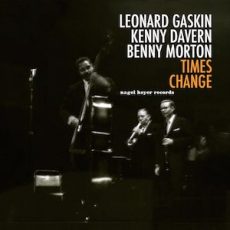
Daily Dose Of Jazz…
Leonard Gaskin was born August 25, 1920 in Brooklyn, New York. He played on the early bebop scene at Minton’s and Monroe’s in New York in the early 1940s. In 1944 he took over Oscar Pettiford’s spot in Dizzy Gillespie’s band,and followed it with stints in bands led by Cootie Williams, Charlie Parker, Don Byas, Eddie South, Charlie Shavers, and Erroll Garner.
In the 1950s, he played with Eddie Condon’s Dixieland band, and played with Ruby Braff, Bud Freeman, Rex Stewart, Cootie Williams, Billie Holiday, Stan Getz, J.J. Johnson, and Miles Davis. In the 1960s he became a studio musician, playing on numerous gospel and pop records. In the 1970s and 1980s he returned to jazz, playing with Sy Oliver, Panama Francis, and The International Art of Jazz.
Gaskin became involved in educating young people later in his life. He toured and performed at New York City schools, sharing his knowledge with elementary students with the Good Groove Band and the International Art of Jazz groups. For more than a decade, he and drummer Oliver Jackson teamed to play the European jazz festival circuit. He also regularly collaborated with Sy Oliver’s Rainbow Room Orchestra.
Capping off his career in 1994, Leonard performed at the White House’s Congressional Ball at the behest of President Bill Clinton. Although his touring schedule slowed dramatically in the decade to follow, he wrote a privately published autobiography and donated his personal jazz collection to the American Music Archives at the Smithsonian’s Museum of American History.
Bassist Leonard Gaskin transitioned from natural causes at a nursing home in Queens, New York on January 24, 2009. He was 88.
More Posts: bandleader,bass,history,instrumental,jazz,music
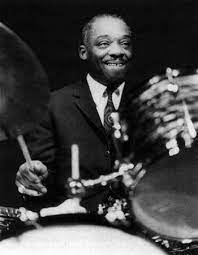
Three Wishes
One night when Kenny “Klook” Clarke was with Baroness Pannonica the topic of three wishes came up and when she asked he responded with:
- “Brigitte Bardot.”
- “Brigitte Bardot.”
- “Brigitte Bardot.”
1a) “No, of course I’m not serious about that. It would be to have Dizzy, J.J., Ray Brown, and Hank Jones. That’s my dream quintet.”
2a) “God, Nica, I don’t know. My second wish is to have my son over here and start him in music.”
3a) “My third wish is to set up a school over here in Paris, and put all those young boys on the right track. Then, if I do that, I’ll be happy. I’m gonna wish for no money! I’d rather do something.”
*Excerpt from Three Wishes: An Intimate Look at Jazz Greats ~ Compiled and Photographed by Pannonica de Koenigswarter
More Posts: baroness,drums,history,instrumental,jazz,music,pannonica,three,wishes
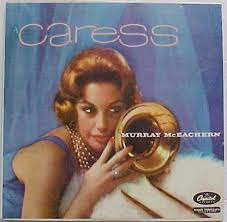
Daily Dose Of Jazz…
Murray McEachern was born in Toronto, Ontario, Canada on August 16, 1915 and studied the violin at the Toronto Conservatory of Music as a boy, and played his first concert recital at Massey Hall at age 12. As a teenager he studied both the saxophone and clarinet, playing with Lucio Agostini and also appearing on CRBC with Percy Faith. Over time he became proficient on several instruments, including the trombone, bass and trumpet.
In 1936, he went to Chicago, Illinois in search of work and got a break as soloist on trombone for Benny Goodman’s big band. He also worked with the Jack Hylton orchestra and then with the Casa Loma Orchestra led by Glen Gray from 1937-41. In 1941, McEachern joined the Paul Whiteman orchestra and shortly after began entertaining U.S. troops during World War II. Two years after the end of the war he went to work with the Phil Moore orchestra.
Murray did studio work in his later career for Hollywood films, including solo performances in The Glenn Miller Story, Paris Blues and The Benny Goodman Story. In the 1960s he was in the Morey Amsterdam Orchestra for the Morey Amsterdam Show on Television Station KTLA in Los Angeles.
A successful recording artist as leader, McEachern toured Europe in 1972 and briefly worked with the Duke Ellington orchestra the following year. He was owner/director of the Tommy Dorsey orchestra from 1974-77.
Trombonist and alto saxophonist Murray McEachern transitioned on April 28, 1982.
More Posts: bandleader,history,instrumental,jazz,music,saxophone,trombone
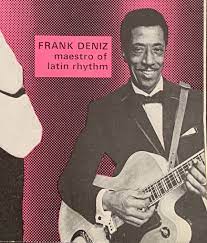
Daily Dose Of Jazz…
Frank Deniz was born Francisco Antonio Deniz on July 31, 1912 in Cardiff, Wales. His father, an African born in Cape Verde, was a seaman, and his mother was of English and African-American descent. They were amateur musicians, father playing violin and mother playing piano. From the age of 15 he joined his father on sea voyages. In 1931 his father was taken ill and the lad was forced to leave him in hospital in Odessa, Ukraine where he died. Between voyages he played music, inspired by jazz guitarists Teddy Bunn and Eddie Lang.
He married pianist Clara Wason in 1936 and they moved to London, England and found work as musicians in Soho. In 1937 they played for a time in the orchestra of Ken “Snakehips” Johnson. Deniz later played at Adelaide Hall’s Florida Club in Mayfair, where he played with pianist Fela Sowande.
Joining the Merchant Navy in 1940, he played music in between voyages with contemporaries Eric Winstone and Edmundo Ros, and formed his own band, the Spirits of Rhythm. In 1944 he was wounded when his ship was torpedoed on approaching Anzio.
Stanley Black, leader of the BBC Dance Orchestra employed him regularly and introduced him to others in the music business. Deniz joined Harry Parry’s Radio Rhythm Club Sextet, which had a regular radio series. In 1953 with his brothers, he formed the Hermanos Deniz Cuban Rhythm Band, which gave regular broadcasts in the 1950s regularly through to the 1970s.
Deniz composed music with his brother Laurence for the 1959 film Our Man in Havana. He accompanied Hoagy Carmichael on a tour of Britain. In his later years he played with the Hermanos Deniz band at the Talk of the Town. This continued for many years until his retirement in 1980, when they lived in Málaga Spain during the summer, until Clara contracted Parkinson’s disease in the 1990s. At this point Deniz became her caregiver until her death.
Guitarist Frank Deniz transitioned on July 17, 2005 at his home in Stanstead Abbotts, Hertfordshire, England.
More Posts: bandleader,guitar,history,instrumental,jazz,music




